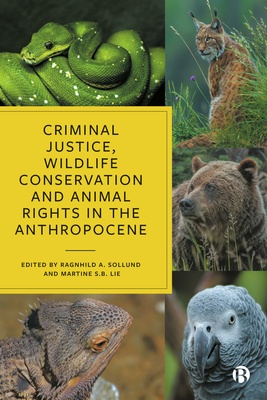We are living in an extinction crisis in which 70 per cent of wildlife has been lost since the 1970s. Despite this, hunting is widespread, and is seen as a sport and a form of cultural expression.
Hunting practices threaten many species, even in countries that have joined conventions aiming to protect animals and plants from going extinct, such as CITES (The Convention on International Trade in Endangered Species of Wild Fauna and Flora) and the Council of Europe’s Bern Convention which protects Europe’s wildlife species and their habitats. A question thus arises: Are the effects of such conventions symbolic rather than offering genuine protection to wildlife?
The Bern Convention has contributed to the return of large predators in several European countries, but the signatory parties have a large degree of discretion over the Convention’s implementation and may take advantage of exceptions to its regulations. Hunting animals that are listed as strictly protected is, for example, generally forbidden, but accepted following certain criteria. In Norway this exemption is used to justify annual licensed hunting of endangered wolverines, brown bears, and grey wolves, with no sanctions from the convention bodies.
To make matters worse, the European Union is pushing to downlist wolves from strictly protected to a protected species in the Bern Convention. This will put wolves in the same category as lynx, the last of the ‘large predators’ in Norway. Despite being endangered, Norwegian lynx are subject to regular quota hunts with the Bern Convention’s blessing. That may also be the case for wolves if downlisted, even though they are critically endangered. Last winter there were only 89–92 wolves in Norway before the annual cull, half of them also residing in Sweden, which has a larger wolf population due to stricter conservation policies in the EU. A downlisting of wolves will likely also lead to more wolf hunts in Sweden, which will further jeopardise the South Scandinavian wolves’ survival.
The Norwegian predator hunts are harmful beyond their threat to biodiversity. Poor shots are common, leaving the animals injured. Hunters employed by the Norwegian Environment Agency hunt wolves and bears from helicopters, despite a prohibition by the Bern Convention on hunting by aircraft. They also dig up wolverine dens to kill the mothers and newborn puppies in so-called ‘den withdrawals’, even though it is forbidden to disturb strictly protected species in the breeding period. Wolverines and lynx may be hunted by traps and caged for hours before being shot. The hunting methods are at odds with the Bern Convention, and both cruel and unethical.
Other animals are also subject to unethical hunting. Much awareness has been raised about the plight of elephants due to the large numbers of these majestic animals which have been killed for the ivory trade. Less attention is currently focused on the fact that elephants are still hunted legally under CITES’ rules, alongside buffalos, wolves, polar bears, grizzly bears, antelopes, baboons, zebras, giraffes, cougars, pumas, cheetahs and many more. Trophy hunters aim to kill as many animals of different taxa as possible, for their trophy collections and to receive awards. A loophole in CITES allows for the killing and trade in trophies whereby wealthy Westerners travel to the Global South, or Canada, Alaska, Russia, and the US, to shoot endangered species missing from their collections. While CITES regulates the trade in endangered species, including prohibiting commercial trade in CITES Appendix I species, under CITES, the import of trophies is not considered ‘commercial trade’, but instead classed as for ‘personal use’. Commercial trade in hunting trophies of species listed in Appendix I is banned while non-commercial trade (including the import of trophies) is allowed. Such trade may continue as long as both exporting and importing countries find that the taking of the animal is not detrimental to the survival of the population. Concerning the Appendix II species, the only requirement is that the exporting country ‘makes a non-detriment finding’, meaning that the killing of the animal will not impact the conservation of the species. The consequences of this loophole are transparent in the statistics of the CITES management authority in Norway, the Norwegian Environment Agency. This agency documents the import of large numbers of trophies, showing why Norway is one of the countries in the world most deeply engaged in wildlife trade.
We call for a remodelling of CITES and the Bern Convention to offer wildlife genuine protection. As we discuss in our edited collection Criminal Justice, Wildlife Conservation and Animal Rights in the Anthropocene, currently both conventions fail to protect wildlife from extinction due to all the exemptions to protection. They remain symbolic paper tigers that legitimate immoral hunting practices, which harm both individual animals and species.
Ragnhild Sollund is Professor in Criminology at the University of Oslo. Her research field is green criminology with a special focus on wildlife crime and wildlife trafficking.
Martine S. B. Lie is Doctoral Research Fellow in Criminology at the University of Oslo. Her research interests are within green criminology and animal protection.
 Criminal Justice, Wildlife Conservation and Animal Rights in the Anthropocene Edited by Ragnhild A. Sollund and Martine S.B. Lie is available on the Bristol University Press website. Order here for £85.99 or £27.99 for the EPUB.
Criminal Justice, Wildlife Conservation and Animal Rights in the Anthropocene Edited by Ragnhild A. Sollund and Martine S.B. Lie is available on the Bristol University Press website. Order here for £85.99 or £27.99 for the EPUB.
Bristol University Press/Policy Press newsletter subscribers receive a 25% discount – sign up here.
Follow Transforming Society so we can let you know when new articles publish.
The views and opinions expressed on this blog site are solely those of the original blog post authors and other contributors. These views and opinions do not necessarily represent those of the Policy Press and/or any/all contributors to this site.
Image Thomas Bonometti via Unsplash


